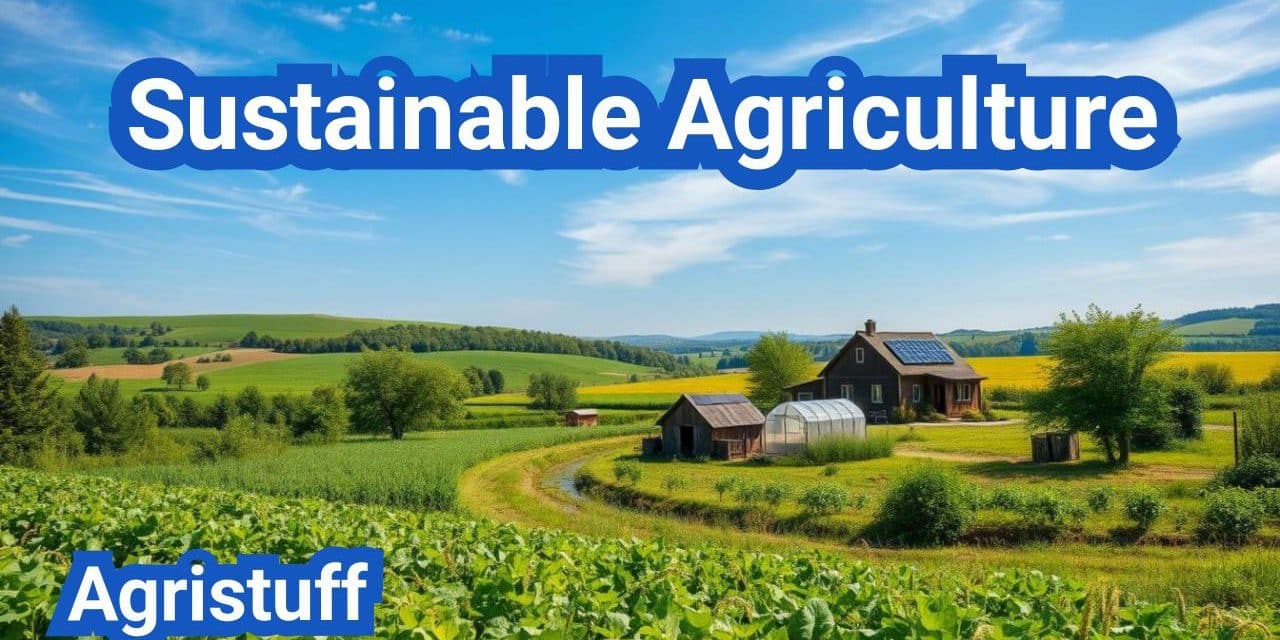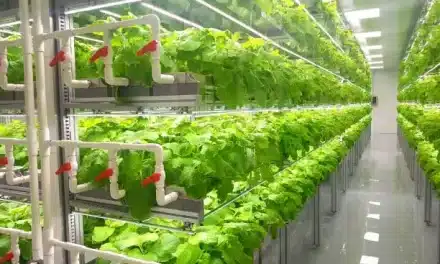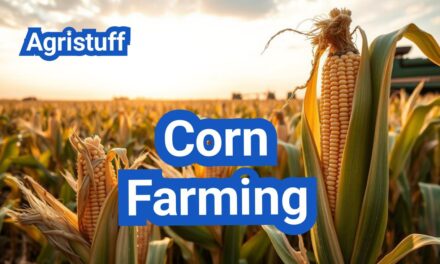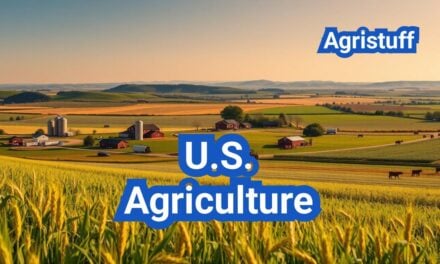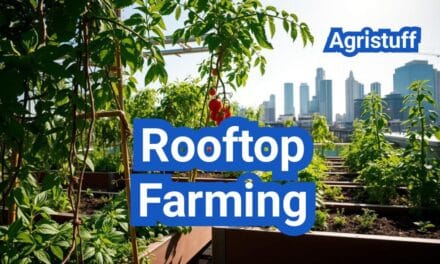Sustainable agriculture is an approach to farming that prioritizes environmental protection, natural resource conservation, and efficient use of non-renewable resources.
Farming practices that are environmentally friendly, socially responsible, and economically viable are crucial for a healthier planet.
By adopting sustainable ag practices, farmers can contribute to a more resilient food system, promoting agriculture and sustainability.
Key Takeaways
- Understanding the concept of sustainable agriculture is vital for environmental conservation.
- Sustainable farmland practices help in preserving natural resources.
- Efficient farming methods are crucial for a sustainable future.
- Adopting sustainable agriculture practices can lead to a more resilient food system.
- The importance of sustainable ag lies in its contribution to a healthier planet.
What Is Sustainable Agriculture?
Sustainable agriculture represents a holistic approach to food production, integrating economic, environmental, and social considerations. It is an integrated system of plant and animal production practices having a site-specific application that will, over the long-term, satisfy human food and fiber needs.
Definition and Core Principles
The definition of sustainable agriculture encompasses a range of practices that prioritize environmental stewardship, social equity, and economic viability. The core principles include maintaining soil health, conserving water, minimizing the use of external inputs like synthetic fertilizers and pesticides, and promoting biodiversity.
Key elements of sustainable agriculture include:
- Efficient use of natural resources
- Minimization of waste and pollution
- Protection of biodiversity
- Promotion of ecosystem services
- Support for local economies
Historical Development of Agricultural Sustainability
The concept of agricultural sustainability has evolved significantly over the decades. Initially, agriculture was primarily focused on productivity. However, as environmental concerns grew, so did the recognition of the need for more sustainable practices. The historical development of sustainable agriculture is marked by a shift towards more environmentally conscious farming methods.
Comparison with Conventional Farming Methods
Sustainable agriculture differs from conventional farming in several key ways. While conventional farming often relies heavily on chemical inputs and intensive monoculture practices, sustainable agriculture focuses on long-term ecological balance and social equity. This comparison highlights the benefits of sustainable practices, including improved soil health, biodiversity conservation, and better water management.
The main differences between sustainable and conventional agriculture are:
- Use of chemical inputs
- Crop diversification vs. monoculture
- Soil conservation practices
- Water management techniques
Why Sustainable Agriculture Matters Today

As the world grapples with climate change and food insecurity, sustainable agriculture emerges as a vital solution. Sustainable agricultural practices are designed to maintain and improve soil fertility, a fundamental aspect of agricultural ecosystems.
Environmental Benefits and Ecosystem Services
Sustainable agriculture offers numerous environmental benefits, including the preservation of ecosystem services. These services are crucial for maintaining biodiversity, ensuring clean water, and supporting pollinators. Some key environmental benefits include:
- Soil Conservation: Techniques like reduced tillage and cover cropping help prevent soil erosion and improve soil health.
- Water Management: Efficient irrigation systems and rainwater harvesting contribute to water conservation.
- Biodiversity Enhancement: Practices such as crop rotation and diversification promote ecological balance.
Economic Advantages for Farmers and Communities
Adopting sustainable agriculture practices can lead to significant economic advantages for farmers and local communities. These benefits include:
- Increased Crop Yields: Sustainable practices can improve soil fertility, leading to higher crop yields over time.
- Market Opportunities: Organic and sustainably produced products often command a premium price in the market.
- Job Creation: Sustainable agriculture can generate employment opportunities in rural areas.
Social Impact and Food Security
Sustainable agriculture plays a crucial role in ensuring food security, particularly in vulnerable communities. By promoting local food systems and improving access to nutritious food, sustainable agriculture contributes to:
- Nutrition: Diverse and locally produced food enhances nutritional outcomes.
- Food Sovereignty: Communities gain greater control over their food systems.
- Resilience: Sustainable agriculture helps communities adapt to climate change and other challenges.
In conclusion, the importance of sustainable agriculture lies in its ability to address environmental, economic, and social challenges simultaneously. By adopting sustainable practices, we can ensure a more food-secure future.
Key Challenges Facing Modern Farming Systems
Modern farming systems are confronted with numerous challenges that threaten their sustainability and productivity. The increasing global demand for food, coupled with the need to reduce environmental impact, has put immense pressure on farmers to adopt more sustainable practices.
Resource Depletion and Degradation
One of the significant challenges facing modern farming is the depletion and degradation of natural resources. Soil erosion, water scarcity, and loss of biodiversity are critical issues that need to be addressed to ensure sustainable agriculture.
Conventional farming methods have led to soil degradation, reducing its fertility and affecting its ability to support future crops. Implementing conservation tillage and crop rotation can help mitigate this issue.
Climate Change and Weather Extremes
Climate change poses a significant threat to modern farming systems. Rising temperatures, changing precipitation patterns, and increased frequency of extreme weather events can lead to crop failures and reduced yields.
Farmers are adopting various strategies to adapt to these changes, including the use of drought-resistant crop varieties and precision agriculture techniques.
Economic Pressures on Farmers
Economic pressures are another significant challenge facing modern farmers. Fluctuating market prices, increasing input costs, and competition from large-scale industrial farms can make it difficult for small-scale farmers to remain profitable.
To address these economic challenges, farmers are exploring alternative revenue streams, such as organic farming and agro-tourism.
Barriers to Adopting Sustainable Practices
Despite the benefits of sustainable agriculture, several barriers hinder its adoption. These include lack of knowledge, high initial costs, and limited access to markets that value sustainable produce.
Addressing these barriers will require a concerted effort from governments, NGOs, and the private sector to provide training, financial support, and market access to farmers transitioning to sustainable practices.
The 7 Essential Practices of Sustainable Agriculture
Sustainable agriculture encompasses a range of practices designed to conserve natural resources and reduce the environmental footprint of farming. These practices not only help in maintaining a healthy ecosystem but also contribute to the long-term viability of agricultural operations.
Crop Rotation and Diversification
Crop rotation is a fundamental practice in sustainable agriculture. It involves changing the type of crops grown on a specific area of land from season to season. This practice helps in maintaining soil fertility, reducing pest and disease pressure, and increasing crop yields. For example, rotating legumes with cereals can enhance soil nitrogen levels, reducing the need for synthetic fertilizers.
A diversified crop rotation plan can also improve farm resilience to climate change. By growing a variety of crops, farmers can spread risk and potentially increase their income through the sale of different products.
Integrated Pest Management
Integrated Pest Management (IPM) is a holistic approach to managing pests that combines physical, cultural, biological, and chemical controls. IPM aims to minimize harm to people, the environment, and beneficial organisms while effectively controlling pest populations.
Key components of IPM include monitoring pest populations, using resistant crop varieties, and applying biological controls such as introducing beneficial insects. Chemical pesticides are used judiciously as a last resort.
| IPM Strategy | Description | Benefits |
|---|---|---|
| Cultural Controls | Modifying farming practices to prevent pest buildup | Reduces pest pressure, improves soil health |
| Biological Controls | Using natural enemies to control pests | Environmentally friendly, sustainable |
| Chemical Controls | Using pesticides as a last resort | Effective against severe pest outbreaks |
Efficient Water Management
Efficient water management is critical in sustainable agriculture, especially in regions prone to drought or with limited water resources. Techniques such as drip irrigation and mulching help reduce water loss and ensure that crops receive the right amount of moisture.
Precision agriculture technologies, including soil moisture sensors and weather stations, enable farmers to make data-driven decisions about irrigation, further optimizing water use.
Reduced Tillage Methods
Reduced tillage or no-till farming minimizes the disturbance of soil through tillage, preserving soil organic matter, reducing erosion, and promoting soil biota. This approach can also help sequester carbon in the soil, contributing to climate change mitigation.
By reducing tillage, farmers can improve soil structure, increase water infiltration, and reduce the loss of topsoil. However, successful implementation requires careful planning and management to avoid potential issues such as increased pest pressure.
Sustainable Soil Management Techniques

Soil health is the foundation of sustainable agriculture, and managing it sustainably is key to long-term productivity. Keeping farm soils protected and teeming with living organisms can solve many problems associated with industrial agriculture. Sustainable soil management involves a range of practices designed to improve soil health, reduce erosion, and promote efficient water use.
Building Soil Health and Fertility
Building soil health and fertility is crucial for sustainable agriculture. This can be achieved through the use of organic amendments such as compost, manure, and green manure. These amendments not only improve soil structure but also enhance nutrient content, promoting healthy plant growth.
Some key strategies for building soil health include:
- Incorporating cover crops into rotation
- Using crop rotation to diversify soil biota
- Avoiding over-tillage to preserve soil organic matter
- Applying organic amendments like compost or manure
Preventing Erosion and Compaction
Soil erosion and compaction are significant threats to soil health. Erosion can lead to the loss of fertile topsoil, while compaction can reduce soil aeration and water infiltration. Techniques to prevent these issues include:
- Implementing conservation tillage or no-till practices
- Using cover crops to protect the soil surface
- Maintaining soil organic matter to improve soil structure
- Avoiding excessive machinery use to minimize compaction
Composting and Natural Amendments
Composting is a valuable practice for improving soil health. It involves breaking down organic materials into a stable form that can be easily absorbed by plants. Composting not only recycles nutrients but also improves soil structure and biodiversity.
Some benefits of composting include:
- Enhanced soil fertility
- Improved soil water-holding capacity
- Support for beneficial soil microorganisms
- Reduced need for synthetic fertilizers
By adopting these sustainable soil management techniques, farmers can improve soil health, reduce environmental impact, and promote long-term agricultural productivity.
Water Conservation in Agriculture
Sustainable agriculture relies heavily on efficient water use, making conservation a top priority for farmers worldwide. As the global population grows, so does the demand for food, putting a strain on water resources. Effective water conservation in agriculture is crucial for ensuring food security, reducing the environmental impact of farming, and maintaining the economic viability of agricultural operations.
Efficient Irrigation Systems
Efficient irrigation systems play a vital role in water conservation. Traditional flood irrigation methods often result in significant water loss due to evaporation and runoff. In contrast, modern irrigation techniques such as drip irrigation and sprinkler systems deliver water directly to the roots of plants, minimizing waste and reducing the overall water requirement. Drip irrigation, in particular, has been shown to reduce water usage by up to 50% compared to traditional methods.
The adoption of precision agriculture technologies further enhances the efficiency of irrigation systems. By using sensors to monitor soil moisture levels and crop water requirements, farmers can optimize irrigation schedules, ensuring that crops receive exactly the right amount of water at the right time.
Rainwater Harvesting Methods
Rainwater harvesting is another effective strategy for conserving water in agriculture. By collecting and storing rainwater, farmers can reduce their reliance on groundwater and surface water sources, which are often subject to fluctuations in availability due to climate change. Rainwater harvesting systems can be as simple as constructing ponds or reservoirs to store rainwater runoff or as complex as installing rooftop collection systems.
The stored rainwater can be used for irrigation during dry periods, supplementing other water sources and helping to maintain consistent crop growth. Additionally, rainwater harvesting can help reduce the burden on stormwater drainage systems, mitigating the risk of erosion and flooding.
Drought-Resistant Farming Techniques
Drought-resistant farming techniques are essential for maintaining productivity in water-scarce conditions. One approach is the use of drought-tolerant crop varieties, which are bred to thrive with minimal water. These crops often have deeper root systems, allowing them to access water deeper in the soil profile.
Another technique is conservation tillage, which reduces soil disturbance and preserves soil moisture. By minimizing tillage, farmers can improve soil health, increase water infiltration, and reduce evaporation. Additionally, the use of mulches and cover crops helps to retain soil moisture, suppress weeds, and regulate soil temperature.
Organic Farming for Sustainable Agriculture

Organic farming is a cornerstone of sustainable agriculture, offering a holistic approach to food production that prioritizes natural methods over synthetic inputs.
By focusing on soil health, biodiversity, and ecological balance, organic farming contributes significantly to sustainable agriculture. This approach not only enhances environmental stewardship but also promotes eco-friendly farming methods that are beneficial for both farmers and consumers.
Principles and Certification Process
Organic farming is guided by a set of principles that emphasize the use of natural materials and processes. The certification process for organic farming involves a thorough inspection of farming practices, soil quality, and the absence of prohibited substances. This process ensures that farms meet rigorous standards for organic production.
Key principles include:
- Maintaining soil fertility through natural means
- Avoiding the use of synthetic fertilizers and pesticides
- Promoting biodiversity and ecological balance
Step-by-Step Transition to Organic
Transitioning to organic farming requires careful planning and execution. Farmers must assess their current practices, identify areas for improvement, and develop a strategy for transitioning to organic methods.
A successful transition involves:
- Conducting soil tests to determine nutrient levels and potential contaminants
- Implementing crop rotation and diversification to enhance soil health and reduce pests and diseases
- Gradually phasing out synthetic inputs and replacing them with natural alternatives
Natural Pest and Disease Management
Organic farming relies on natural methods to manage pests and diseases. These methods include introducing beneficial insects, using physical barriers, and applying organic pesticides.
Effective strategies for natural pest management include:
- Crop rotation and diversification
- Biological control methods, such as introducing beneficial insects
- Use of organic pesticides derived from natural sources
Market Opportunities and Challenges
The market for organic products is growing rapidly, driven by consumer demand for healthier and more sustainable food options. However, organic farming also faces challenges, including higher production costs and the need for specialized knowledge and equipment.
To capitalize on market opportunities, farmers can:
- Develop a strong brand identity and marketing strategy
- Explore direct-to-consumer sales channels, such as farmers’ markets and CSA programs
- Seek out organic certification to access premium markets
Regenerative Agriculture: Going Beyond Sustainability

Regenerative agriculture is an innovative approach that goes beyond sustainability by regenerating the health of the entire ecosystem. This farming practice focuses on improving soil health, biodiversity, and ecosystem services, ultimately contributing to a more resilient agricultural system.
Core Practices and Principles
Regenerative agriculture encompasses several core practices and principles designed to enhance ecological balance. These include:
- Minimizing soil disturbance through reduced tillage or no-till methods
- Implementing cover cropping and crop rotation to enhance soil fertility and structure
- Integrating organic amendments and compost to improve soil health
- Promoting biodiversity through the use of diverse crop and animal species
Key Benefits of regenerative agriculture include improved soil carbon sequestration, enhanced water retention, and increased biodiversity. By adopting these practices, farmers can contribute to mitigating climate change while improving the productivity and resilience of their farms.
Carbon Sequestration Benefits
One of the significant advantages of regenerative agriculture is its potential for carbon sequestration. By enhancing soil health through regenerative practices, farmers can capture and store more carbon in the soil, reducing atmospheric CO2 levels. This not only helps in combating climate change but also improves soil fertility and structure.
| Regenerative Practice | Carbon Sequestration Potential | Additional Benefits |
|---|---|---|
| Reduced Tillage | Moderate | Improved soil health, reduced erosion |
| Cover Cropping | High | Enhanced biodiversity, improved soil fertility |
| Organic Amendments | High | Improved soil structure, increased water retention |
Transitioning to Regenerative Methods
Transitioning to regenerative agriculture requires careful planning and implementation. Farmers should start by assessing their current farming practices and identifying areas for improvement. Gradual changes, such as introducing cover crops or reducing tillage, can help in achieving a more regenerative farming system.
By embracing regenerative agriculture, farmers can not only contribute to environmental sustainability but also enhance the long-term viability of their farming operations.
Sustainable Urban Agriculture Solutions

The rise of sustainable urban agriculture is transforming urban landscapes with solutions such as vertical farming and container gardening. As cities continue to grow, the need for innovative food production methods becomes increasingly important. Sustainable urban agriculture involves a range of practices aimed at making cities more food-resilient.
Rooftop and Vertical Farming Systems
Rooftop and vertical farming systems are at the forefront of sustainable urban agriculture. These methods allow for crop production in small or unconventional spaces, maximizing land use efficiency. Rooftop farming involves cultivating crops on rooftops, providing insulation and reducing urban heat island effects. Vertical farming, on the other hand, stacks crops in vertically arranged layers, often in indoor environments, allowing for year-round production regardless of weather conditions.
- Rooftop farming reduces urban heat island effects and provides additional insulation to buildings.
- Vertical farming allows for controlled environment agriculture, reducing the need for pesticides and herbicides.
- Both methods can significantly increase food production in urban areas, enhancing food security.
Community Gardens and Urban Farms
Community gardens and urban farms play a crucial role in sustainable urban agriculture by providing green spaces for community engagement and food production. These initiatives not only supply fresh produce to local residents but also serve as educational hubs for teaching sustainable gardening practices.
Community gardens are typically managed by local residents who come together to cultivate a shared plot of land. Urban farms, while similar, often operate on a larger scale and may incorporate more advanced farming techniques.
Addressing Urban Food Deserts
Urban food deserts are areas with limited access to affordable and nutritious food. Sustainable urban agriculture solutions like community gardens and urban farms can help address this issue by providing fresh produce directly to these communities.
“Urban agriculture has the potential to improve food security, provide fresh produce, and foster community development in urban areas.” –
Urban Agriculture Expert
Container Gardening Techniques
Container gardening is another accessible method for urban residents to grow their own food. This technique involves growing plants in pots or containers, which can be placed on balconies, patios, or even indoors.
- Choose containers with good drainage to prevent waterlogged soil.
- Select plants suitable for container gardening, such as herbs, leafy greens, or cherry tomatoes.
- Use a well-balanced fertilizer to promote healthy plant growth.
By adopting these sustainable urban agriculture solutions, cities can become more resilient and self-sufficient in their food production, ultimately enhancing the quality of life for urban residents.
Agroecology: Farming with Nature

By applying ecological principles to agriculture, agroecology offers a promising approach to sustainable farming. This method focuses on enhancing biodiversity, improving soil health, and efficiently using resources, thereby promoting ecological balance.
Ecological Principles in Farming
Agroecology is based on understanding the interactions between different components of an ecosystem. It involves designing farming systems that work with natural processes, rather than against them. Key principles include crop diversification, soil conservation, and the efficient use of water resources.
Efficient water management is crucial in agroecology. Techniques such as drip irrigation and mulching help reduce water loss and retain soil moisture, making farms more resilient to droughts.
Biodiversity Enhancement Strategies
Enhancing biodiversity is a core aspect of agroecology. Strategies include planting a variety of crops, maintaining ecological corridors, and conserving natural habitats within farms. This not only supports a wider range of flora and fauna but also enhances ecosystem services like pollination and pest control.
Biodiversity benefits include improved ecosystem resilience, better nutrient cycling, and increased crop yields due to enhanced pollination services.
| Biodiversity Strategy | Benefits | Implementation Method |
|---|---|---|
| Crop Diversification | Improved soil health, reduced pests and diseases | Planting multiple crop species |
| Ecological Corridors | Enhanced wildlife habitat, improved pollination | Maintaining natural vegetation strips |
| Conservation of Natural Habitats | Supports biodiversity, improves ecosystem services | Protecting existing natural areas within farms |
Case Studies of Successful Implementation
Several farms around the world have successfully implemented agroecological practices, achieving significant environmental and economic benefits. For example, farms in Africa have used agroforestry practices to improve soil fertility and increase crop yields.
These case studies demonstrate the potential of agroecology to transform farming systems, making them more sustainable and resilient.
Community Supported Agriculture Models

The Community Supported Agriculture model represents a significant shift in how we think about food production and consumption. By fostering a direct relationship between farmers and consumers, CSA programs promote a more sustainable and equitable food system.
Setting Up CSA Programs
Establishing a successful CSA program requires careful planning and execution. Farmers must assess their land, crops, and production capacity to determine the number of shares they can offer. It’s also crucial to develop a pricing structure that balances the needs of both farmers and consumers.
Effective marketing strategies are essential for attracting members. Utilizing social media, local newspapers, and community events can help spread the word about the CSA program. Farmers should also consider partnering with local businesses and organizations to promote their initiative.
Benefits for Farmers and Consumers
CSA programs offer numerous benefits for both farmers and consumers. For farmers, CSA models provide a stable source of income and help reduce financial risks associated with crop failures or market fluctuations. Consumers, on the other hand, gain access to fresh, locally grown produce while supporting local agriculture.
- Financial stability for farmers
- Access to fresh, locally grown produce for consumers
- Opportunities for community building and education
Successful CSA Examples in America
Across the United States, numerous CSA programs have achieved significant success. For example, Fairview Gardens in Massachusetts has been operating a successful CSA program for over two decades, providing members with a diverse range of organic produce. Similarly, Full Belly Farm in California has developed a thriving CSA initiative that supports local food systems and promotes sustainable agriculture practices.
These examples demonstrate the potential of CSA models to transform local food economies and promote sustainable agriculture. By adopting CSA programs, farmers and consumers can work together to create a more resilient and equitable food system.
Transitioning to Sustainable Agriculture Practices

The shift towards sustainable agriculture involves a comprehensive approach that encompasses farm assessment, phased implementation, and overcoming challenges. As farmers embark on this journey, they must consider various factors that impact the success of their transition.
Farm Assessment and Planning Process
A thorough farm assessment is the foundation of a successful transition to sustainable agriculture. This process involves evaluating the current state of the farm, including soil health, water resources, and biodiversity. Farmers should identify areas that need improvement and develop a plan to address these challenges.
Key components of the assessment include:
- Soil testing to determine nutrient levels and pH
- Water resource evaluation to ensure efficient use
- Biodiversity assessment to promote ecosystem services
Phased Implementation Strategies
Implementing sustainable agriculture practices is not a one-time event, but rather a process that occurs in phases. Farmers should start by introducing small changes and gradually scale up as they gain experience and confidence.
Some effective phased implementation strategies include:
- Introducing crop rotation and diversification to improve soil health
- Implementing integrated pest management techniques to reduce chemical use
- Adopting efficient irrigation systems to conserve water
Overcoming Common Transition Challenges
Farmers transitioning to sustainable agriculture often face challenges such as higher initial costs, lack of knowledge, and market barriers. To overcome these challenges, farmers can seek support from government programs, non-profit organizations, and industry experts.
Some common challenges and potential solutions include:
| Challenge | Solution |
|---|---|
| Higher initial costs | Seek financial support through grants and subsidies |
| Lack of knowledge | Participate in training programs and workshops |
| Market barriers | Develop a marketing strategy to highlight the benefits of sustainable products |
Finding Financial Support and Resources
Transitioning to sustainable agriculture can be costly, but there are various financial support options available to farmers. These include government grants, subsidies, and loans specifically designed for sustainable agriculture projects.
Farmers can also explore alternative funding sources, such as:
- Crowdfunding platforms
- Private investors interested in sustainable agriculture
- Cooperatives and farmer networks
Sustainable Agriculture Education and Careers

The field of sustainable agriculture is rapidly evolving, creating new opportunities for those interested in pursuing a career in this sector. As the demand for sustainable food systems grows, so does the need for professionals with specialized knowledge and skills.
Degree Programs and Certifications
Various academic programs now offer degrees and certifications in sustainable agriculture, providing a foundation in the principles and practices of sustainable farming. These programs cover topics such as agroecology, organic farming, and sustainable food systems. Institutions across the United States offer these programs, equipping students with the theoretical and practical knowledge needed for a career in sustainable agriculture.
Some notable programs include those focused on sustainable agriculture practices, environmental conservation, and agricultural innovation. These programs not only educate students but also prepare them for careers in research, education, and agricultural management.
Hands-on Learning Opportunities
Hands-on learning is crucial in sustainable agriculture education, allowing students to gain practical experience. Many programs include internships, apprenticeships, and fieldwork, providing students with the opportunity to apply their knowledge in real-world settings.
For example, participating in a community-supported agriculture (CSA) program or working on an organic farm can give students valuable experience. These hands-on opportunities help build a deeper understanding of sustainable agriculture practices and prepare students for the challenges they may face in their careers.
Career Paths in Sustainable Food Systems
Graduates with a background in sustainable agriculture can pursue a variety of career paths. Some may choose to work directly in farming, while others may find opportunities in research, education, or policy development.
Career options include roles such as sustainable agriculture specialist, organic farm manager, or agricultural educator. There are also opportunities in government agencies, non-profit organizations, and private companies focused on sustainable agriculture.
Continuing Education for Established Farmers
Continuing education is essential for established farmers looking to adopt or expand their use of sustainable agriculture practices. Workshops, conferences, and online courses provide opportunities for farmers to stay updated on the latest techniques and research.
Many organizations offer resources and training programs specifically designed for farmers. These programs cover a range of topics, from soil health and conservation to marketing and business management for sustainable agriculture products.
Measuring Success in Sustainable Agriculture
Measuring the success of sustainable agriculture involves a multifaceted approach, considering environmental, economic, and social factors. To comprehensively assess its impact, various indicators and metrics are employed.
Environmental Impact Indicators
Environmental indicators are crucial for understanding the ecological footprint of sustainable agriculture practices. These include:
- Soil Health: Measured through indicators like soil organic matter, structure, and biodiversity.
- Water Quality: Assessed by monitoring nutrient runoff, pesticide residues, and overall water purity.
- Biodiversity: Evaluated by tracking the variety of plant and animal species on and around farms.
Economic Viability Metrics
Economic viability is a key factor in the long-term success of sustainable agriculture. Metrics used to assess this include:
- Profitability: Calculated by comparing farm income against expenses.
- Market Access: Evaluated by assessing the ease with which farmers can sell their products.
- Input Costs: Monitored to ensure that the costs of sustainable practices are manageable.
Social and Community Benefits Assessment
The social impact of sustainable agriculture is significant, affecting both farmers and the broader community. Assessment areas include:
- Farmers’ Quality of Life: Improved through better working conditions and fair labor practices.
- Community Engagement: Measured by the level of participation in local food systems and agricultural events.
- Food Security: Enhanced by increasing the availability of nutritious, locally produced food.
Tools and Resources for Farm Evaluation
Several tools and resources are available to help farmers evaluate and improve their sustainable agriculture practices. These include:
- Farm Assessment Software: Digital tools that help track environmental and economic metrics.
- Workshops and Training Programs: Educational resources that teach best practices and new techniques.
- Certification Programs: Schemes like Organic certification that provide a benchmark for sustainability.
By utilizing these indicators, metrics, and tools, farmers and stakeholders can comprehensively measure the success of sustainable agriculture initiatives, driving continuous improvement and wider adoption.
Finally: The Future of Sustainable Agriculture
The future of sustainable agriculture is promising, driven by increasing adoption of eco-friendly farming practices and growing demand for sustainable food production. As communities and farmers continue to embrace sustainable agriculture, the potential for transforming food systems becomes more achievable.
Sustainable agriculture not only benefits the environment but also enhances economic viability for farmers and contributes to food security. By adopting practices like crop rotation, integrated pest management, and efficient water management, farmers can improve soil health, reduce environmental impact, and increase crop yields.
The growing interest in community-supported agriculture models and regenerative agriculture further underscores the momentum towards a more sustainable food system. As the world moves forward, the integration of sustainable agriculture practices will be crucial in addressing the challenges posed by climate change, resource depletion, and food insecurity.
Embracing sustainable agriculture is a step towards a more resilient and environmentally conscious food system, ultimately benefiting both current and future generations.
FAQ
What is sustainable agriculture?
Sustainable agriculture refers to farming practices that prioritize environmental stewardship, social responsibility, and economic viability, ensuring a healthy food system for future generations.
What are the core principles of sustainable agriculture?
The core principles of sustainable agriculture include maintaining soil health, conserving water, promoting biodiversity, and using environmentally friendly farming practices that minimize waste and pollution.
How does sustainable agriculture compare to conventional farming methods?
Sustainable agriculture differs from conventional farming by focusing on long-term ecological balance, whereas conventional farming often prioritizes short-term yields and profit, potentially harming the environment.
What are the benefits of sustainable agriculture?
Sustainable agriculture offers numerous benefits, including improved soil health, increased biodiversity, enhanced ecosystem services, and better economic outcomes for farmers and local communities.
What are the challenges facing modern farming systems?
Modern farming systems face challenges such as resource depletion, climate change, economic pressures, and barriers to adopting sustainable practices, which can impact their long-term viability.
What are the 7 essential practices of sustainable agriculture?
The 7 essential practices of sustainable agriculture include crop rotation, integrated pest management, efficient water management, reduced tillage, cover cropping, organic amendments, and biodiversity conservation.
How can farmers transition to sustainable agriculture practices?
Farmers can transition to sustainable agriculture by assessing their current practices, developing a plan, implementing changes gradually, and seeking support from resources such as government programs, non-profits, and educational institutions.
What is regenerative agriculture, and how does it differ from sustainable agriculture?
Regenerative agriculture is a subset of sustainable agriculture that focuses on regenerating soil health, promoting biodiversity, and sequestering carbon, often going beyond sustainability by actively improving the environment.
What role does agroecology play in sustainable agriculture?
Agroecology plays a crucial role in sustainable agriculture by applying ecological principles to farming, enhancing biodiversity, and promoting ecosystem services that support long-term sustainability.
How can urban areas benefit from sustainable agriculture?
Urban areas can benefit from sustainable agriculture through initiatives like rooftop farming, community gardens, and container gardening, which increase food access, promote community engagement, and enhance urban ecosystems.
What educational opportunities are available in sustainable agriculture?
Educational opportunities in sustainable agriculture include degree programs, certifications, hands-on learning experiences, and continuing education for established farmers, providing a range of pathways for those interested in the field.
How is the success of sustainable agriculture measured?
The success of sustainable agriculture is measured using indicators such as environmental impact, economic viability, and social benefits, which help assess the effectiveness of sustainable practices and identify areas for improvement.
Conclusion of: Sustainable Agriculture
Sustainable agriculture is a vital approach to farming that prioritizes environmental health, economic profitability, and social equity. As global food demand rises, sustainable agriculture offers a practical solution to feed populations without degrading natural resources or harming future generations. In the United States and worldwide, this approach is reshaping how we grow food and care for the land.
Below, we’ll explore everything you need to know about sustainable agriculture—its principles, benefits, practices, technologies, and future potential.
What Is Sustainable Agriculture?
Sustainable agriculture refers to farming practices that meet current food and textile needs without compromising the ability of future generations to meet theirs. It balances environmental stewardship, economic profitability, and social responsibility.
The goal of sustainable agriculture is to create systems that are resilient, productive, and supportive of both farmers and ecosystems. It goes beyond yields to consider the well-being of farmworkers, biodiversity, and soil health. In short, sustainable agriculture is about farming in a way that is good for the planet and people.
External Link: USDA definition of sustainable agriculture
Principles of Sustainable Agriculture
The core principles of sustainable agriculture include:
- Environmental health: Minimizing pollution, conserving water, and promoting soil health.
- Economic profitability: Ensuring farmers and communities benefit financially.
- Social and economic equity: Supporting fair labor practices and equitable food access.
These principles guide the decisions made on sustainable farms and help ensure that agricultural practices contribute to long-term ecological balance and human well-being.
External Link: Food and Agriculture Organization – Principles of sustainable agriculture
Benefits of Sustainable Agriculture
There are numerous benefits to adopting sustainable agriculture. Environmentally, it reduces greenhouse gas emissions, improves biodiversity, and preserves topsoil. Economically, it can cut costs through resource efficiency and open access to premium markets that demand eco-conscious products.
Socially, sustainable agriculture improves working conditions, promotes food security, and revitalizes rural communities. It provides a comprehensive answer to the many challenges faced by modern agriculture.
External Link: Environmental Protection Agency – Benefits of sustainable agriculture
Key Practices in Sustainable Agriculture
Many practical methods contribute to sustainable agriculture, including:
- Crop rotation: Improves soil health and reduces pests.
- Cover cropping: Prevents erosion and adds organic matter.
- Reduced tillage: Maintains soil structure and reduces carbon loss.
- Integrated pest management (IPM): Minimizes chemical use.
- Agroforestry: Combines trees with crops for mutual benefit.
All of these practices work together to enhance sustainability on farms and ensure the long-term productivity of agricultural landscapes.
External Link: SARE – Sustainable Agriculture Research and Education practices
Role of Technology in Sustainable Agriculture
Technology plays a critical role in improving the efficiency and sustainability of modern agriculture. Precision farming, drones, soil sensors, and AI-powered farm management tools allow for targeted applications of water, fertilizers, and pesticides—reducing waste and environmental harm.
In the U.S., farmers are increasingly adopting digital tools to monitor field conditions, improve crop yields, and minimize resource use. Sustainable agriculture benefits greatly from these innovations, enabling smarter decisions and better outcomes.
External Link: World Bank – Digital agriculture and sustainability
Sustainable Livestock Farming
Sustainable agriculture is not limited to crops—it also includes ethical and eco-friendly livestock management. This involves rotational grazing, animal welfare improvements, and reducing methane emissions through diet and waste management strategies.
Sustainable livestock operations prioritize animal health, reduce antibiotic use, and focus on pasture-based systems. These changes help address climate concerns while maintaining high-quality meat, dairy, and poultry production.
External Link: National Sustainable Agriculture Coalition – Sustainable livestock practices
Organic vs Sustainable Agriculture
While they often overlap, organic and sustainable agriculture are not identical. Organic farming focuses on eliminating synthetic inputs like pesticides and fertilizers, while sustainable agriculture is broader—it includes organic methods but also prioritizes long-term ecosystem and community health.
Organic certification can be a part of sustainable agriculture, but many sustainable practices are not necessarily organic. The key is choosing methods that work in harmony with nature and meet local needs.
External Link: USDA Organic vs Sustainable Farming Comparison
Economic Viability of Sustainable Agriculture
Sustainable agriculture can be profitable. By reducing dependency on expensive inputs, improving soil productivity, and accessing markets for sustainably produced goods, farmers can build resilient and economically sound businesses.
Additionally, government support, grants, and sustainable certifications often provide financial incentives for farms that adopt greener practices. In the U.S., programs like EQIP (Environmental Quality Incentives Program) help offset the transition costs.
External Link: USDA EQIP Program Overview
Challenges in Implementing Sustainable Agriculture
Despite its benefits, sustainable agriculture faces several barriers:
- High initial costs for transitioning from conventional systems.
- Limited access to training and resources for small farmers.
- Market pressure for cheap food vs. sustainable production.
- Policy and infrastructure gaps in rural areas.
Overcoming these challenges requires investment, education, and collaboration among farmers, researchers, and policymakers.
External Link: United Nations – Challenges of Sustainable Agriculture
Sustainable Agriculture and Climate Change
Sustainable agriculture plays a significant role in combating climate change. Practices like carbon sequestration, reduced tillage, and agroforestry help lower emissions and adapt to extreme weather.
By building healthier soils and reducing dependence on fossil fuels, sustainable agriculture can mitigate climate impacts while maintaining reliable food production.
External Link: IPCC – Agriculture and climate mitigation
Sustainable Agriculture in the United States
In the U.S., sustainable agriculture is growing rapidly. From regenerative ranching in the Midwest to organic farms in California, farmers across the nation are leading the movement toward more resilient and responsible systems.
Organizations like the National Sustainable Agriculture Coalition (NSAC) advocate for policies that support family farms, conservation, and healthy food systems.
External Link: NSAC – Sustainable agriculture in the U.S.
The Future of Sustainable Agriculture
Looking ahead, sustainable agriculture will play a crucial role in feeding a growing global population. Innovations in biotechnology, climate-smart agriculture, and circular farming systems offer exciting opportunities for sustainability.
Governments, consumers, and businesses all have a part to play in driving the transition toward a more sustainable food system.
External Link: World Resources Institute – Future of sustainable food systems
Final Thought
Sustainable agriculture is not just a farming trend—it’s a necessity. As environmental challenges intensify and global demand for food increases, the need for farming systems that protect people, animals, and the planet has never been greater. From improved soil practices to high-tech innovations, sustainable agriculture offers a hopeful, practical path forward.
By supporting policies, educating farmers, and making informed consumer choices, we all contribute to a healthier food future. Embracing sustainable agriculture is investing in our collective well-being and the resilience of future generations.

